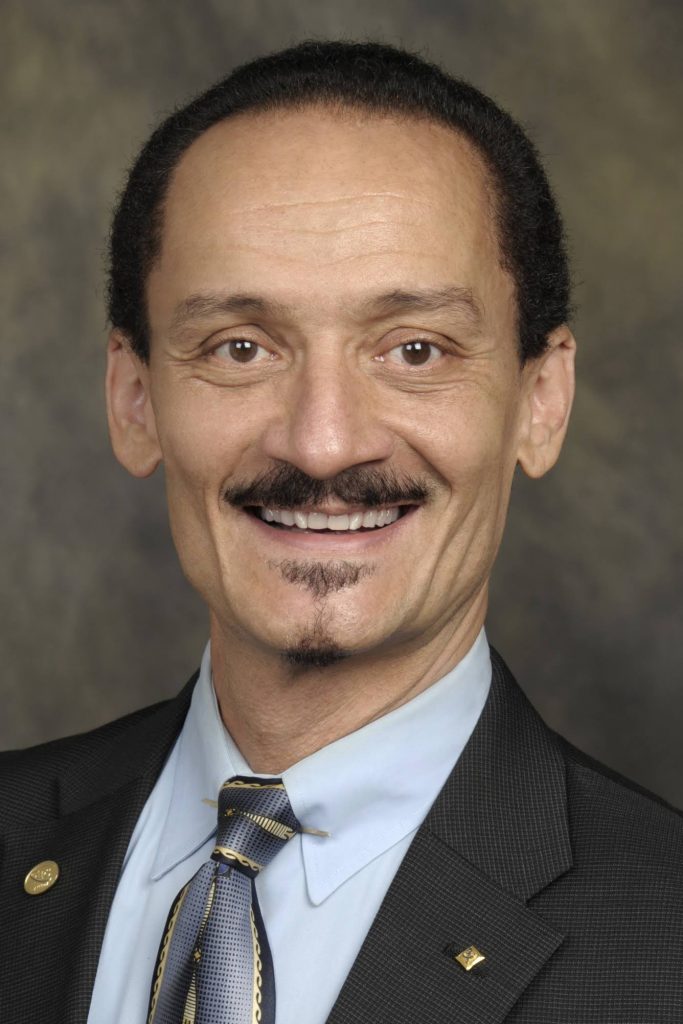The generation of arbitrary optical waveforms in real time is of keen interest owing to their use in a broad range of applications, spanning secure communications, advanced radar and lidar systems, and control of complex optically induced phenomena. The ability to modify such signals at ultrafast rates would make radar systems more accurate, secure, and with better resolution, and could also usher in new modalities in laser-based material interactions for manufacturing.
In the past, arbitrary optical waveforms could be generated by using a single laser beam, a modulator and an electronic arbitrary waveform generator (AWG). The difficulty is that the performance of the waveform generation is limited by the electronic AWG. To achieve waveforms with much faster variations, an alternative approach, called “pulse shaping” is used. In this technique, a laser that produces very short pulses, much shorter than a picosecond is used as the light source. The optical spectrum of the laser is dispersed using a diffraction grating, analogous to a prism that separates the components of the spectrum and direct them to a liquid crystal spatial light modulator (LC-SLM) array, where each pixel of the LCSLM modulates a component. The outcome is then reassembled to create the arbitrary waveform. This process is identical to the mathematical process of describing a signal by its ‘Fourier transform’ spectrum. While this approach has proven very useful for some applications, the ability to modify the generated waveform is limited by the speed of the LCD, which operates in the millisecond regime.
Peter Delfyett and his students use instead an array of vertical cavity surface emitting lasers (VCSELs), with the individual lasers playing the role of elements of the LCD array (see Fig. 1). An ultrashort pulse laser is dispersed into its spectral components and each component ‘injection locks’ each laser in the VCSEL array. By modulating the electric current driving each VCSEL element, they can modulate the spectral components, thereby creating the arbitrary waveform. The key advantage of this approach is that the VCSEL array can be updated much faster (several billion times a second) than the LC-SLM, an improvement of several million folds.
In Delfyett’s system the ultrashort pulse is an optical frequency comb with 12 comb spectral components, spaced on a 12.5 GHz grid. The pulse spectral dispersion is obtained by use of a diffraction grating and a lens designed such that each comb component is spatially dispersed on a 250 micron spacing that matches the spacing between individual VSCELs. The light from each comb component injection locks each VCSEL, such that the output lasing emission of each VCSEL is forced, or locked, to emit at exactly the same wavelength of the injected light. By slightly changing the current to each VCSEL, the output emission maintains its wavelength but acquires a phase shift as compared to the input injection seed light. It is this phase shift that provides modulation on a comb-by-comb basis, and allows the synthesis of arbitrary waveforms. For the VCSELs used in the experiment, a maximum phase range of ~0.7π rad is measured, which limits the complexity of the pulse shapes that can be generated. Also, phase-only modulation is achieved for slowly varying VCSEL currents.

To show the ability to adapt this approach to dynamic changes of the optical waveform, four of the comb components were dynamically modulated and the resulting waveforms were measured using multi-heterodyne detection. This was used to demonstrate the ‘real-time’ capability of the approach. Future work will be performed by utilizing larger arrays, with faster VCSEL speeds and developing a modified architecture for integrating specific functionalities for a compact system design.
In summary, the injection locked VCSELs can act as an ultrafast spatial light modulator in the process of arbitrary waveform generation using Fourier synthesis techniques. The technique has improved on past works by over a million fold. Future work will be performed by utilizing larger arrays, with faster VCSEL speeds and developing a modified architecture for integrating specific functionalities for a compact system design.
Prof. Delfyett was named Florida Academy of Science’s 2014 Medalist. He is a member of the National Academy of Inventors and a recipient of the APS Edward Bouchet Award.
